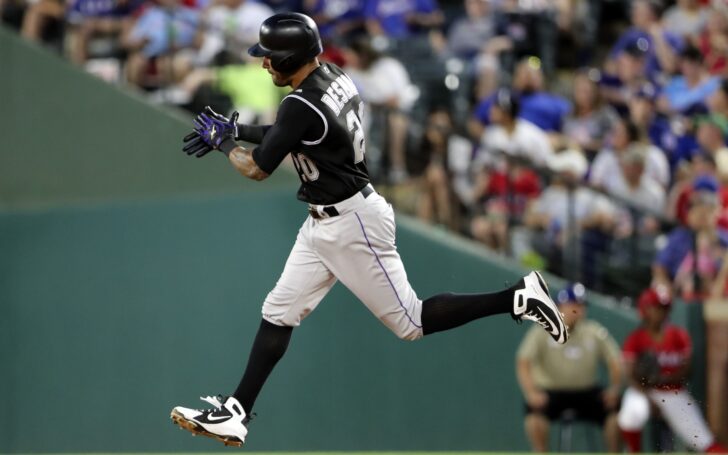Ian Desmond is on pace to set career highs in home runs and RBIs this season. Take that for what it’s worth, but Desmond’s 162-game pace has rebounded from a disastrous first two months of 2018 while the Rockies as a team do just the opposite.
Some metrics on Desmond are still ugly – his WAR is negative, his wRC+ is 28 percent below the league average and he gets on base at a lowly clip of .275. But his production of late and a dive into some other metrics give hope to the club that Desmond’s worst is certainly behind him.
In the Rockies’ last three series, Desmond has started all nine contests and hit .294 with three home runs and seven RBIs. His batting average finally climbed above .200 for the first time since the season was just two weeks old. During that same nine-game stretch, though, the Rockies lost three consecutive series, picking up just two wins along the way.
Though his slash line of .209/.275/.422 leaves plenty of room for improvement, Desmond has proven to be an integral part of Colorado’s lineup. He trails only Trevor Story on the team in home runs and ranks third in RBIs. He is sixth in the NL in home runs and ranks in the top-15 in RBIs.
While Desmond’s strikeout tendencies have caused concern throughout the season, he has always been that type of player. His 150-game pace – the average number of games Desmond has played during healthy seasons throughout his career – is 154 whiffs for 2018. That is nearly identical to his career rate of 148 per season.
Meanwhile, his production at the plate is at or above career levels in many categories. Using the same 150-game mark, Desmond is on track to hit more than 30 home runs with 87 RBIs. That would set a career high for long balls (currently 25 in 2012) and fall within four plated runs of his current best set during his 2014 Silver Slugger campaign.
Both paces are well above his career averages, leaving batting average and other on-base metrics as the outliers this season. Prior to 2018, Desmond was a .269 career hitter. Just as important, though, he has never enjoyed a full season in which his batting average on balls in play (BABIP) is less than .307.
This season, Desmond’s BABIP is a ghastly .230, more than .100 points less than his career mark of .328. In short, BABIP measures how often balls in play fall for hits. It’s a measure of the quality of contact a player is making and factors in the luck of facing a poor or exceptional defense.
Per Fangraphs, the league average for BABIP always falls around .300. The game’s very best players can consistently produce a BABIP of .350 while the worst hitters fall to a yearly mark near .260.
Desmond’s .230 BABIP signifies two things – his quality of contact on batted balls that are not home runs is worse this season, and he is also the recipient of bad luck. While his fly ball percentage (18.9) is the lowest it’s been in his career, Desmond’s hard hit percentage (33.7) has never been higher. In other words, he’s making strong contact with the ball more frequently, but those hard-hit balls are usually hit on the ground.
Because of this unorthodox parallel and Desmond’s career BABIP resting more than 100 points higher than its current state, there’s reason to believe that his actual batting average is in line for a healthy improvement as the season wears on.
The 32-year-old is already producing at or above career levels in many batting categories. Should this improvement extend into the more difficult metrics, the Rockies’ highest-paid player could begin to prove his worth.



